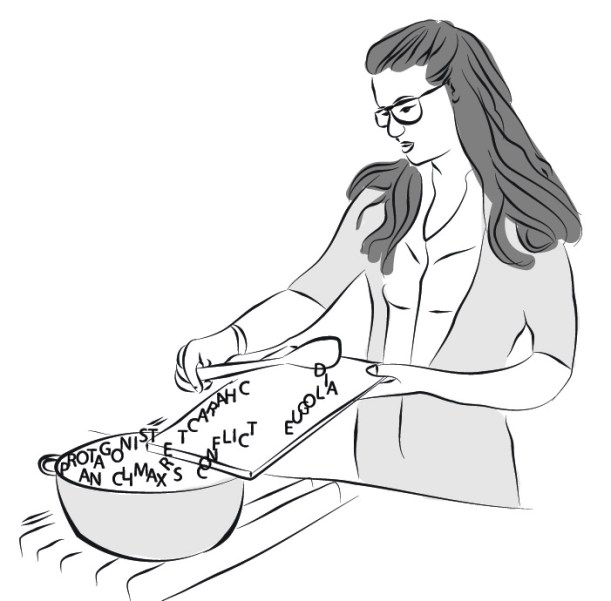A book is a recipe and has many components- essentials and condiments that make it yum. I won’t delve into all the essentials I found in this book but only the ideas that stand out for me and could help you.
One essential is plot. Wyndham gives us a few pointers in what she calls a Plot recipe, the sauce that makes your book good food for thought. It’s nothing but a list of questions:
- Who is your character?
- Who/what is your antagonist?
- Who are the other people in the story?
- What does the main protagonist want?
- How important is it for him to get what he wants?
- How does the antagonist prevent him from getting it?
- What does the protagonist do about the obstacle?
- What are the results of the initial action?
- Where does the struggle lead him?
- What is the climax?

Asking yourself these questions can be frightening, especially when all you are doing is shooting words on to a page, but having this dialogue with yourself gives your writing a bit of direction. You may not go where you want to go, but talking to your story opens doors.
Another tricky source of writer’s block is Dialogue. What’s the best way to write it? Better to rephrase that- what’s the best way to hear it? If you spend an entire day transcribing conversations you overhear, you will find a lot of incoherence. Believe me I’ve tried this once. When you rewrite those conversations, you pick those sentences which show more than tell.
Dialogue is a clue to the character and of course what happens next. Don’t forget the he said and she said; no taglines and the reader gets very confused after a while, not to mention the young reader. Learning to write dialogue requires a good ear. Watch plays, Lee Wyndham says. Today she would say: Watch movies.
We may light candles for world peace but every story requires conflict. Important problems could be:
- Man against nature (children adore the weather!)
- Man against himself (children won’t get that)
- Man against man (this is engaging)
How to revise
Stephen King’s revision rules have stayed with me. Wyndham lays out a plan to get back what was lost “from transcription to type”.
- Once you’re done with your novel, write your next one (easier said than done). The cooling off period helps you not to fall in love with your work or to hate it too much.
- Read your work quick, in silence and without pausing.
- You are the reader now. What do you feel? Is the story (not your story anymore- the Author is Dead) good? Is the protagonist’s goal worth the trouble? Would you call the story plot worthy?
- Fix it.
To read Writing for Children and Teenagers as a guide to writing today is unfair. It is a valuable guide to writing, no doubt, but writing and publication have changed. “Do not invest your own money for the publication of your book,” Wyndham says. How prehistoric is that?
Also any editors who chew their pencils, please comment on this blog! You are greatly missed.
In spite of references to white elephant typewriters and reference methods besides Google (yes there is a world of archives out there that writers should use), a good section of the book is relevant to NaNoWrimers and writers everywhere. Read with an eye to take in the most important stuff –a writer selectively tailors her experience of the world into a story.
Skip the examples and antiquities, and Writing for Children and Teenagers may just be a great find.




Pingback: Writing for Children and Teenagers (Revised Edition) by Lee Wyndham (Part 1) | InstaScribe